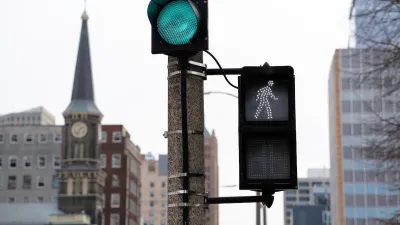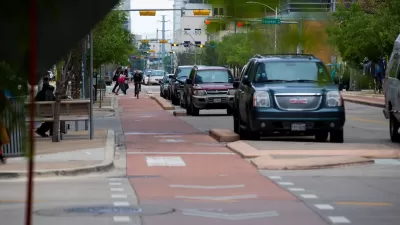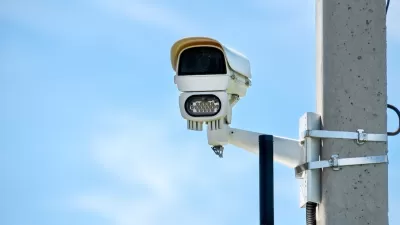Marking a bike lane with cones or other delineators can dramatically reduce driving speeds in adjacent traffic lanes.

A new study from Rutgers University-New Brunswick reveals that a new bike lane at a high-traffic New Jersey intersection led to lower traffic speeds when cars approached.
Kitta MacPherson describes the results, noting that “To analyze the effect of the bike lane on traffic speeds, the researchers employed computer vision techniques to classify the speed and trajectory of more than 9,000 motor vehicles.”
As many traffic analyses have identified speeding as a contributing factor in a majority of crashes, inducing such a “traffic calming” effect with a bike lane could enhance road safety and decrease the risk and severity of crashes, the researchers said.
Delineating a bike lane with cones led to a 28 percent reduction in maximum speeds, a significant improvement over the presence of just a painted bike lane (which led to an 11 to 15 percent reduction in speeds only for drivers turning right). “Younes hypothesized that drivers slow down when they see a bike lane marked with the cones because the driving lane is narrower and requires more concentration, and it’s easier to notice cones or planters or some other space delineator than it is to spot painted lines on the road surface.”
FULL STORY: Traffic Speeds Decrease When Bike Lane is Present

Study: Maui’s Plan to Convert Vacation Rentals to Long-Term Housing Could Cause Nearly $1 Billion Economic Loss
The plan would reduce visitor accommodation by 25,% resulting in 1,900 jobs lost.

North Texas Transit Leaders Tout Benefits of TOD for Growing Region
At a summit focused on transit-oriented development, policymakers discussed how North Texas’ expanded light rail system can serve as a tool for economic growth.

Why Should We Subsidize Public Transportation?
Many public transit agencies face financial stress due to rising costs, declining fare revenue, and declining subsidies. Transit advocates must provide a strong business case for increasing public transit funding.

How to Make US Trains Faster
Changes to boarding platforms and a switch to electric trains could improve U.S. passenger rail service without the added cost of high-speed rail.

Columbia’s Revitalized ‘Loop’ Is a Hub for Local Entrepreneurs
A focus on small businesses is helping a commercial corridor in Columbia, Missouri thrive.

Invasive Insect Threatens Minnesota’s Ash Forests
The Emerald Ash Borer is a rapidly spreading invasive pest threatening Minnesota’s ash trees, and homeowners are encouraged to plant diverse replacement species, avoid moving ash firewood, and monitor for signs of infestation.
Urban Design for Planners 1: Software Tools
This six-course series explores essential urban design concepts using open source software and equips planners with the tools they need to participate fully in the urban design process.
Planning for Universal Design
Learn the tools for implementing Universal Design in planning regulations.
City of Santa Clarita
Ascent Environmental
Institute for Housing and Urban Development Studies (IHS)
City of Grandview
Harvard GSD Executive Education
Toledo-Lucas County Plan Commissions
Salt Lake City
NYU Wagner Graduate School of Public Service





























